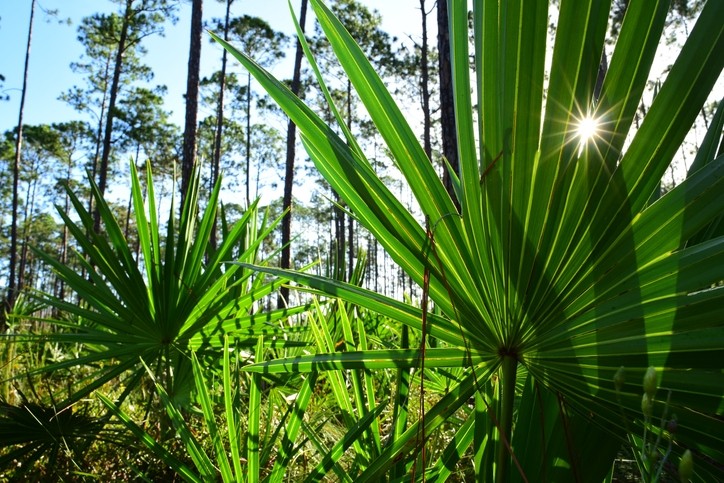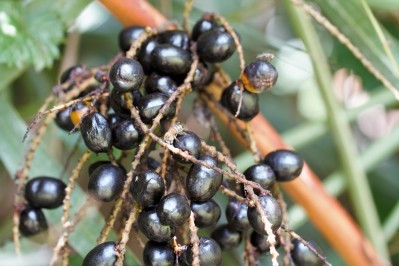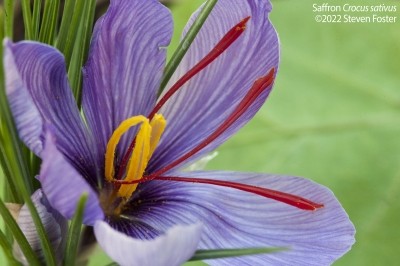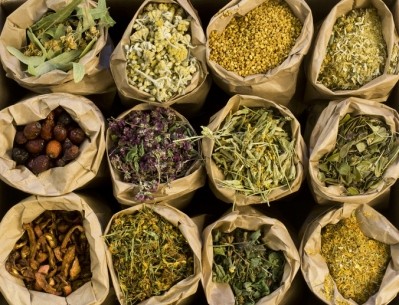Habitat loss, climate change cloud saw palmetto’s future, ABC article warns

The hope for this long-traded botanical lies in the fact that the plant still covers vast tracts in its native habitat. The cautionary note is that this acreage has declined significantly in the past 70 plus years and continues to shrink, while demand for the botanical is rising.
Saw palmetto (Serenoa repens) is a member of the palm family and is the only member of its genus. The plant grows as a large bush or small tree in dense thickets in Florida and southern Georgia.
The plant has study, sharp edged leaves and grows in such impenetrable stands that it can block movement of people and animals. For that reason is was often thought of as a nuisance in the development of the eastern and central parts of Florida where it is most common.
Berries were staple for hundreds of years
But it also has a long history of use as a medicinal plant and as a foodstuff. The plant produces bountiful harvests of green, orange or dark purple berries that reportedly were eaten by native Americans and plantation slaves who prized it as a bracing tonic that has particular effects on the ‘organs of regeneration.’ Hernando de Soto first recorded the use of the plants as food in 1575 during his wanderings through central Florida.
The taste of the berries was said to be an ‘acquired’ one, and the oily saw palmetto fruits never found a place as a modern mainstream foodstuff. But commercial medicinal preparations of the plant date back to 1879. The products were first touted for coughs, colds and general debility, but also soon acquired a reputation as a treatment for prostate conditions, which is the modern claim for the products.
For example, a 2021 study compared the effects of a ‘hexanic extract of Serenoa repens’ at a 320 mg/day dose to that of the commonly prescribed drug Flomax. It found the saw palmetto extract matched the drug at relieving the urinary tract symptoms of an enlarged prostate with fewer side effects.
The ABC article, which appeared in the most recent issue of ABC’s publication HerbalGram, was written by noted botanical expert and photographer Stephen Foster. It traces the natural history and market history of the plant, and delves into some the pressing issues for its future. The article covers more than 30 pages and includes 110 references. It is the most extensive article of its type the organization has published.
Vast, but shrinking acreage
How much saw palmetto is out there depends on the measurement tool used. One 1998 report estimated about 1.1 million acres of saw palmetto was available for harvest. A 2014 paper put the potential ‘dominant or prime saw palmetto habitat’ at 1.98 million acres. But the author of that paper found that the potential habit had declined by 43% from the figure published in an anonymous 1947 paper.
While this is still a vast amount compared to the potential supply of many botanicals, Foster notes the trend for the plant is negative. Foster said thousands of acres of saw palmetto are bulldozed every year to make way for grazing or for commercial or residential development. Saw palmetto thickets do not enjoy the strict protection that the state of Florida has (belatedly) extended to mangrove stands.
Climate change threatens crops
And Foster said climate change may affect future supplies as well. Higher average temperatures may affect productivity, either through fruit drop from heavier than usual rains or from fungal infestation. And sea level rise associated with a warming ocean and melting ice caps could water log as much as 9% of the potential habitat in the coming century.
Another threat to the continued viability of the product in the market has to do with agricultural labor. Saw palmetto is still an almost exclusively wildcrafted botanical and is North America’s largest wild-harvested herbal dietary ingredient by weight. More than 21,000 tons by fresh weight of saw palmetto berries were harvested in 2017.
But questions remain what the labor supply for this activity will be in the future. For a number of years botanical ingredient suppliers have reported shrinking labor pools for many types of wildcrafting.
In the meantime, Foster said interest in saw palmetto continues to rise. The botanical is now the 13th best selling herbal ingredient, according to the most recent ABC Herb Market Report.
Time for a thorough assessment
In conclusion, Foster said it may be time for a high-level assessment of the future of this important botanical.
“The loss of hundreds of thousands of acres of saw palmetto habitat to livestock rangeland and commercial development, combined with dramatic increase in demand for saw palmetto berries over the last 30 years and the potential loss of suitable environmental conditions due to shifting climatic patterns, bring into question the future of this herb. Where will saw palmetto berries come from in the future, and is the uspply sustianable?” Foster concluded.
Source: HerbalGram
Number 132 Nov 2021-Jan 2022
Saw Palmetto History, Biology, and Trade
Author: Foster S
















